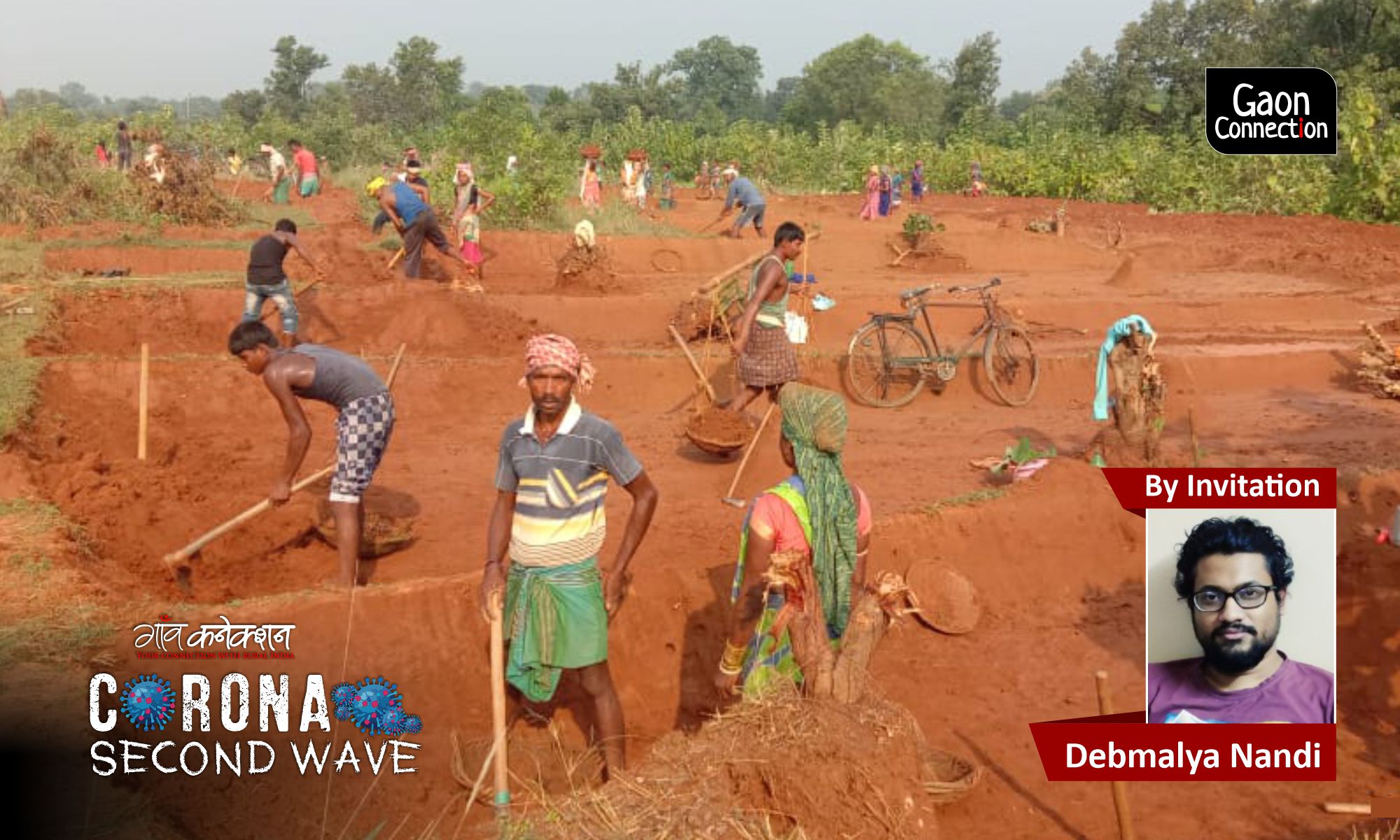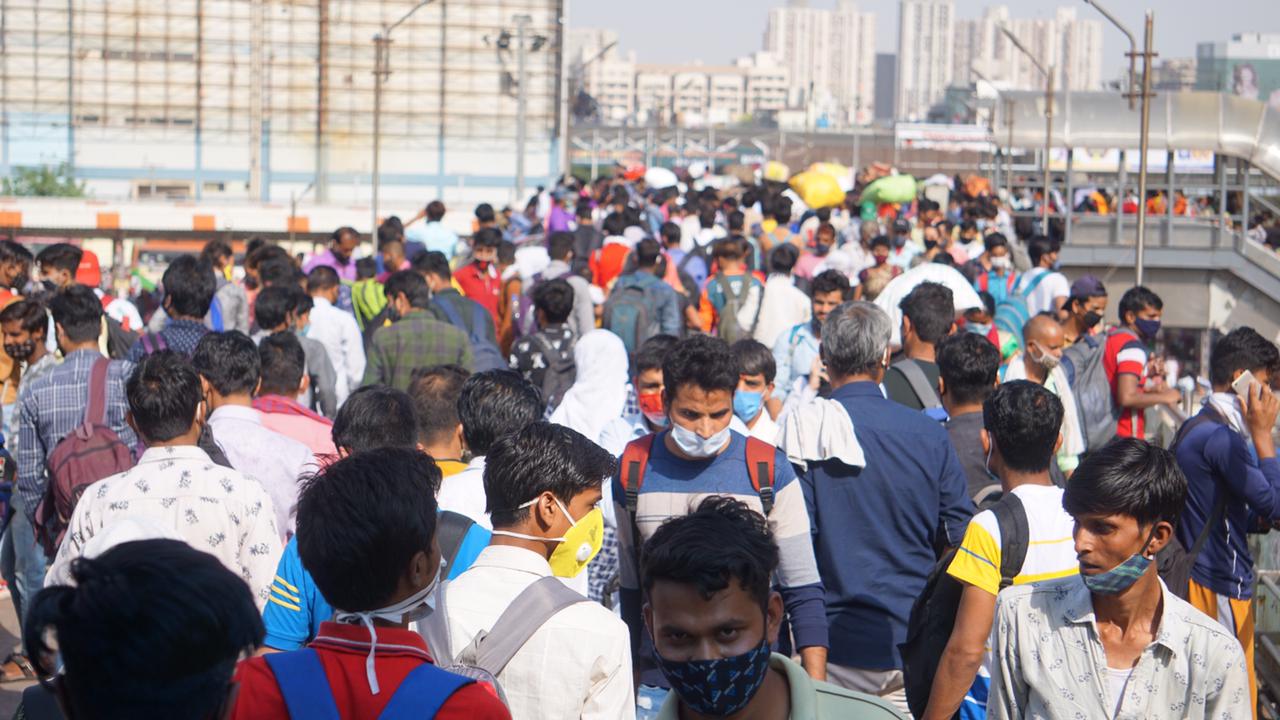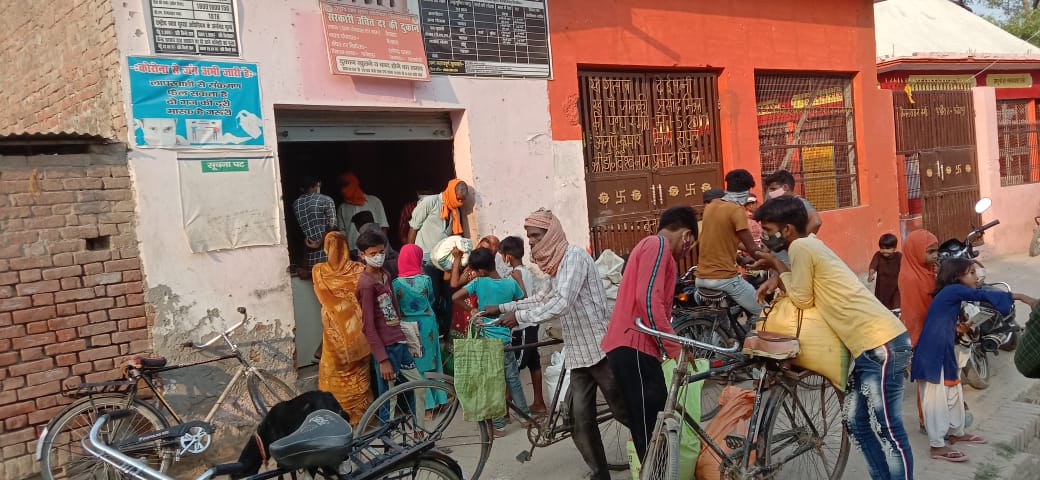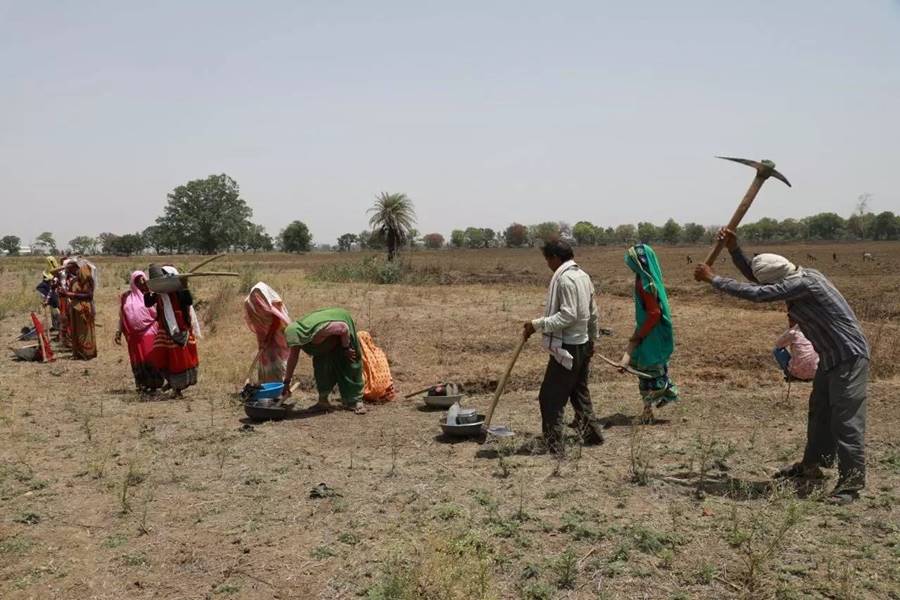COVID and rural economic distress: Food for all and work for all should be the way forward
In the second wave of the pandemic, as the lockdown makes a comeback, migrant workers and the rural poor are facing great distress. The crisis for food and work is going to intensify further. Both the PDS and MGNREGA need to be strengthened.


There is a greater need to strengthen the PDS and MGNREGA this time, to ensure no one goes hungry. All photos: By arrangement
As the health crisis intensifies in the second wave of the COVID19 pandemic, we have been pushed towards a situation where the lockdown seems inevitable. This will have severe implications on the livelihoods of citizens belonging to the informal sectors. There is already adequate evidence that migrant workers and the rural poor have been facing great distress, and the crisis for food and work is going to intensify further.
Based on a survey, The Right to Food Campaign, India, and the Centre for Equity Studies have recently come up with the ‘Hunger Watch Report’ which compares last year’s pre-lockdown situation to the situation in October 2020 (post-lockdown) with the aim of assessing the impact of the nationwide lockdown.
Loss of livelihoods and rising hunger
The face-to-face survey involved 4,000 respondents from vulnerable communities (low income categories in the informal sector) spread across 11 states, almost equally split between urban and rural areas.
Also Read: Rising hunger stares rural India in the face as the second wave of COVID invades villages
It found that 27 per cent of the respondents had no income in October 2020 as compared to pre-April 2020 when they were on an average earning around Rs 7,000 per month. Additionally, about 68 per cent respondents said that their nutritional uptake had decreased and they were consuming less nutritious food such as less vegetables, fruits, and pulses than before. Also, 48 per cent of the respondents said they had to skip one meal a day in October 2020.

Lockdown and migrant workers
As state after state imposes lockdown this year again, the migrant workers have become further vulnerable. While many have returned to their villages, a large population is stranded in different parts of the country without (adequate) work.
Stranded Workers Action Network (SWAN), a group of individuals helping distressed migrant workers since last year, has been reaching out to workers for providing essential help. According to their reports, 81 per cent of the people that they reached out to said that work had completely stopped, mostly since April 15 this year, and 76 per cent of the workers were facing shortage of food and cash, and required immediate support. There are millions who are facing the same plight.

COVID in rural India
Meanwhile, the virus has reached villages this time and is spreading quickly in rural communities. The district and block administrations have put stringent regulations in place. The curfews and lockdowns have impacted the rural economy in a negative way already. The situation is only going to worsen.
The losses for daily wage workers, livestock rearing communities and marginal farming households will create great economic distress and increased indebtedness. The livestock sector had faced a huge challenge last year due to inadequate vaccination and medication for the small ruminants and the farmers involved in the activities are still struggling to cope with the losses. Further losses could be dangerous for small and marginal farming households.

Expanding PDS
The public distribution system (PDS) and MGNREGA (Mahatma Gandhi National Rural Employment Guarantee Act) have been greatly effective last year to deal with the crisis and worked as a safety net for millions who otherwise would have faced extreme poverty. Therefore, there is a greater need to strengthen the PDS and MGNREGA this time, to ensure no one goes hungry.
The Indian government has announced five kilogram free foodgrain for individuals enlisted under the National Food Security Act, 2013, through the public distribution system for May and June this year.
The Pradhan Mantri Gareeb Kalyan Anna Yojana (PMGKAY) which ended in November last year has been resumed for May and June to ensure the supply. This is a conservative and inadequate arrangement and shows the lack of vision of the central government.
The government should extend the coverage of ration distribution under the PDS and PMGKAY immediately and include all eligible households under the schemes. According to an independent study about 100 million people are excluded from the ration distribution system owing to an old database based on the decade old 2011 census.
Also Read: Excluded by marriage: ‘Over a million women in Odisha left out of PDS’
The Centre should also extend the free foodgrain programme under PMGKAY for a year instead of two months of May and June. The economic crisis arising out of the pandemic is likely to last for a long time.
News reports point out that India has produced record rice and wheat last financial year during the kharif and rabi seasons and the procurement through mandis is significantly higher than the previous year. The total procurement is way more than the total requirement for PDS even if we include PMGKAY’s additional allocations. It is thus, quite possible to expand the safety net of the National Food Security Act and include more families under the PMGKAY.

Allocate more for MGNREGA
The Centre had allocated Rs 73,000 crore (Rs 730 billion) for 2021-22 under MGNREGA and notified an annual increment of about four per cent in wages. Both these provisions are inadequate to match the requirements at ground.
The recent central allocation for MGNREGA is about Rs 38,500 crore (Rs 385 billion) less than the last year’s revised estimate. Out of the 75.6 million households which worked in MGNREGA in 2020-21, even if 10 million households opt out of MGNREGA this financial year, the Centre should still budget for 75-80 days of employment in the year for 65 million families given the current scale of economic distress.
By this rationale, at the current rate of Rs 268 per day per person wage, at least Rs 130,000 crore (Rs 1,300 billion) will have to be budgeted for MGNREGA in 2021-22. The government should also reconsider its decision of a mere four per cent increase in the wages and hike it by at least 10 per cent. This will have an implication of about another Rs 10,000 crore (Rs 100 billion). Therefore, at least Rs 140,000 crore (Rs 1,400 billion) will be required to ensure uninterrupted implementation of MGNREGA during this financial year.
The Union government is soon expected to find itself in a more severe situation as the second wave of the pandemic and the return of the lockdowns will push more and more people into hunger and severe cash crunch. The government should prioritise food and work for all and start making policy reforms right away.
Debmalya Nandy is associated with the NREGA Sangharsh Morcha, and has worked with the tribal population in Jharkhand and Odisha for 11 years.

